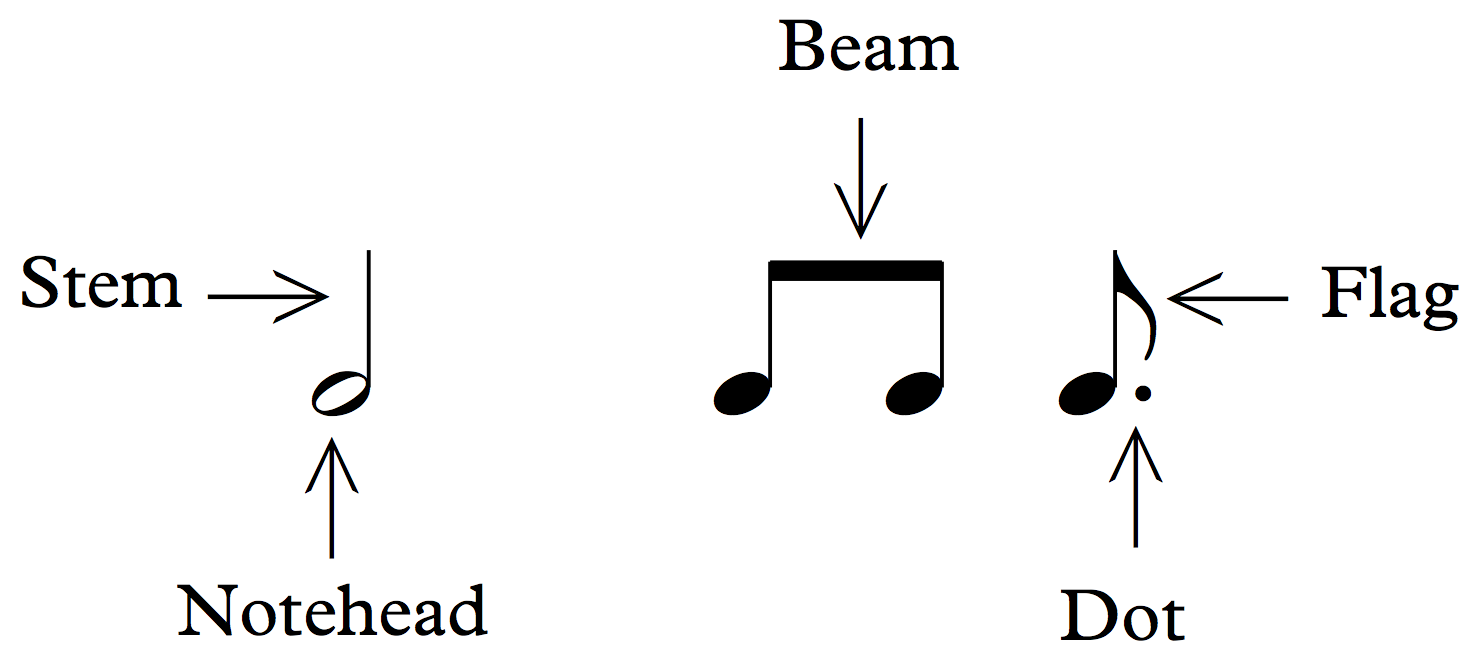Integrated Music Theory 2021-22
Discussion 1a - Pitches and Clefs
Class Discussion
Creating a Definition of Rhythm
A pattern or a series of patters that happens in a certain amount of time.
A systematic way to organize time within music
We take for granted that we have been learning this for years. Sometime, we will have to describe music to those who have no background. We have to make it understandable, as well as to do our best to keep it interesting.
The point of these first four weeks are learning how to communicate the fundamentals that we already know to those who are not aquainted with them.
Clef Puzzle
- Treble Clef
Lines, E,G,B,D,F
Spaces, F,A,C,E
- Alto Clef
Lines, F,A,C,E,G
Spaces, G,B,D,F
- Tenor Clef
Lines, D,F,A,C,E
Spaces, E,G,B,D
- Bass Clef
Lines, G,B,D,F,A
Spaces, A,C,E,G
- Why are clefs designated by a letter?
G Treble clef circles the G
F Bass clef emphasizes the F with the dots and the start of the clef
C Tenor and Alto clef are both centered on middle C
- Where did clefs come from?
A lack off ledger lines, and smaller ranges, so the clef would move around for the ease of the instrumentalist or vocalist, making it for their range.
- How do the clefs relate?
Middle C is one ledger line below the treble clef and one ledger line above the bass clef. Alto and tenor clef delineate middle C
- What instruments use alto and tenor clef?
Alto clef has cello, viola, and trombone.
Tenor clef has cello, trombone, sometimes tuba, and french horn.
Further Reading
======
From Open Music Theory
Notes
When written on a staff, a note indicates a pitch and rhythmic value. The notation consists of a notehead (either empty or filled in), and optionally can include a stem, beam, dot, or flag.

Staff
Notes can’t convey their pitch information without being placed on a staff. A staff consists of five horizontal lines, evenly spaced. The plural of staff is staves.
Clefs
Notes still can’t convey their pitch information if the staff doesn’t include a clef. A clef indicates which pitches are assigned to the lines and spaces on a staff. The two most commonly used clefs are the treble and bass clef; others that you’ll see relatively frequently are alto and tenor clef.
Grand staff
The grand staff consists of two staves, one that uses a treble clef, and one that uses a bass clef. The staves are connected by a curly brace. Grand staves are used frequently for notating piano music and other polyphonic instruments.
Ledger lines
When the music’s range exceeds what can be written on the staff, extra lines are drawn so that we can still clearly read the pitch. These extra lines are called ledger lines. In the example below, From Haydn’s Piano Sonata in G (Hob. XVI: 39), A-flat5 occurs just above the treble staff in the right hand, and G3 and B3 occur just below the treble staff in the left hand.

Accidentals
Accidentals are used to indicate when a pitch has been raised or lowered. They are written to the left of the pitch.
- When you lower one of the white notes of the piano by a semitone, you add a flat.
- When you raise one of the white notes of the piano by a semitone, you add a sharp.
- When you raise a note that is already flat by a semitone, you add a natural.
- When you lower a note that is already flat by a semitone, you add a double flat.
- When you raise a note that is already sharp by a semitone, you add a double sharp.
The example below shows the symbols for flat, natural, sharp, double sharp, and double flat, respectively.
